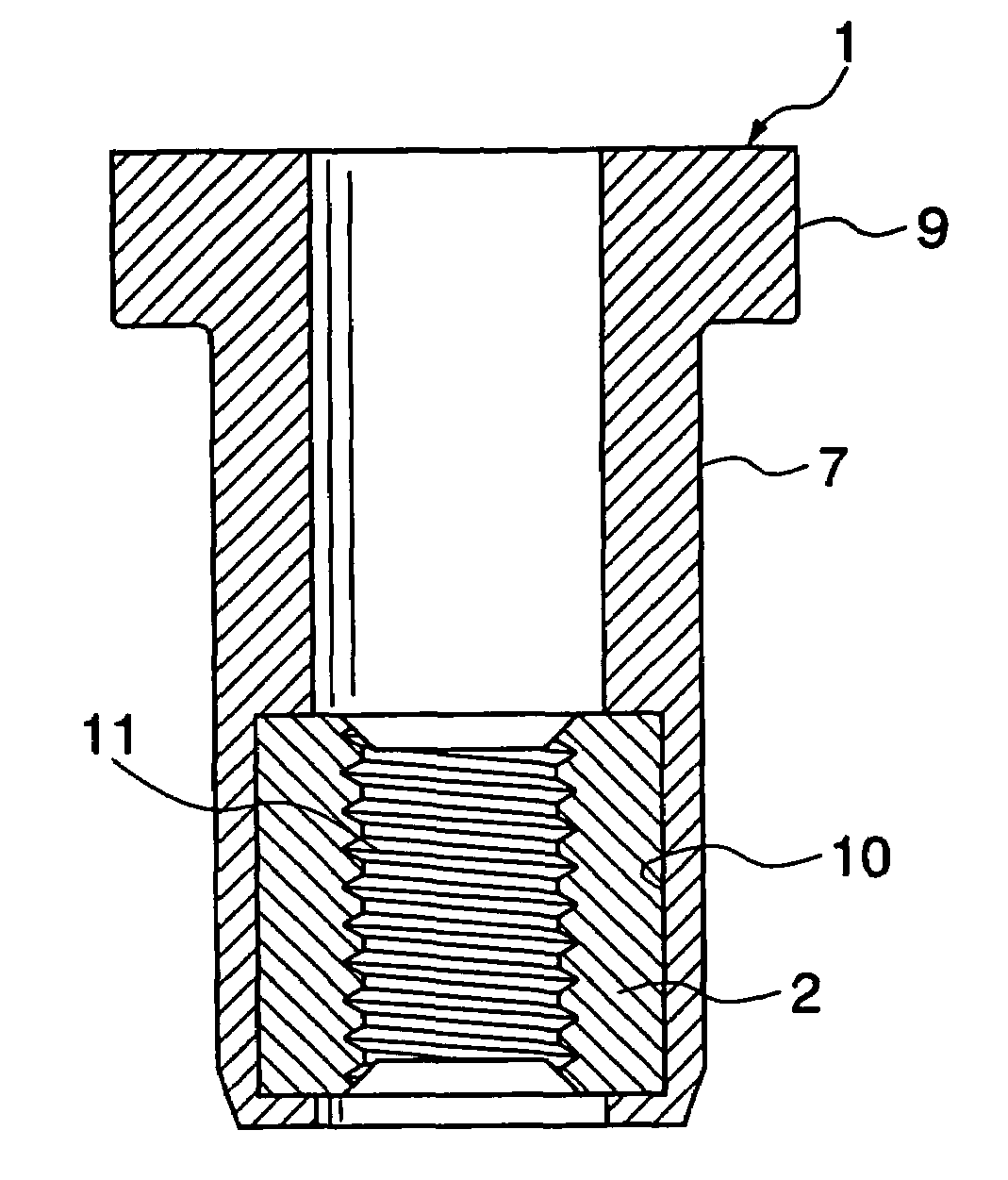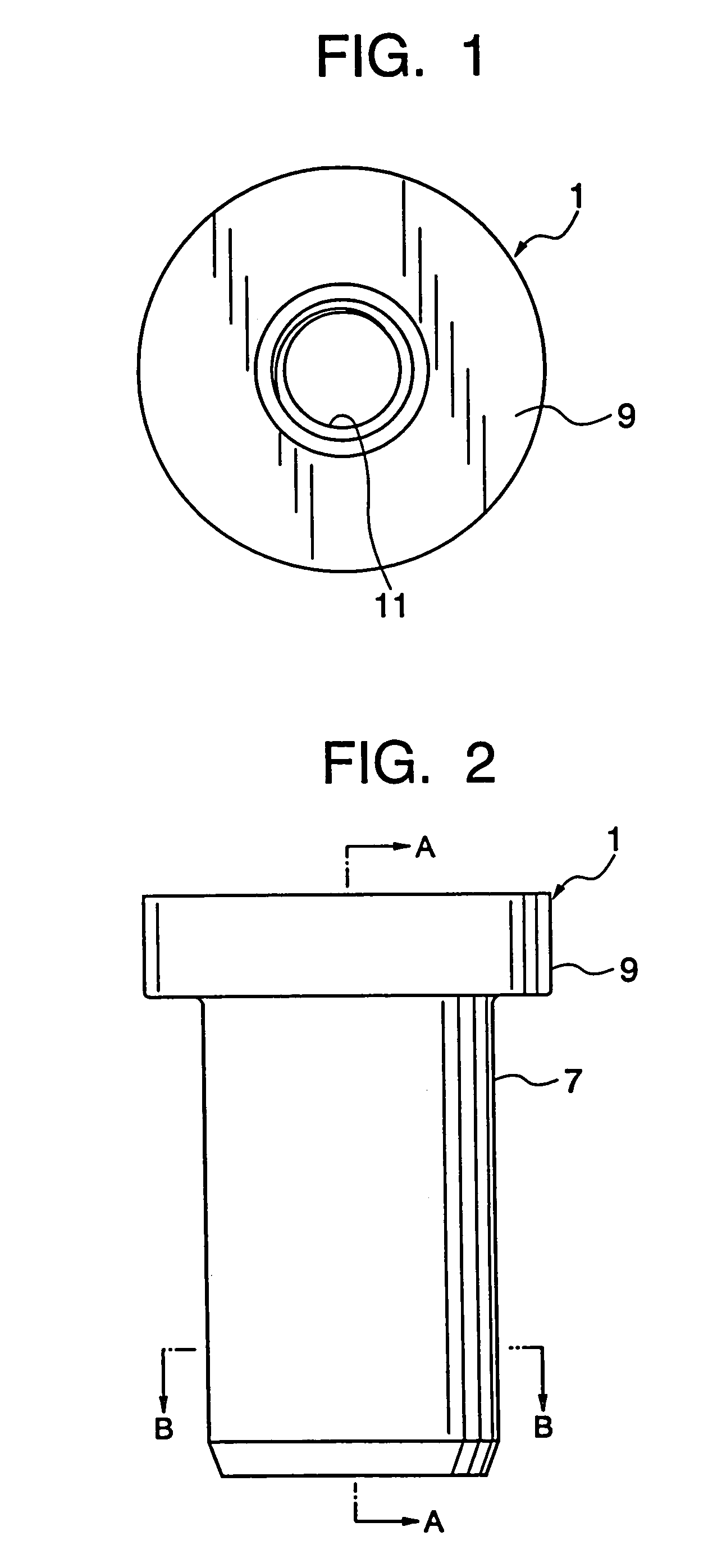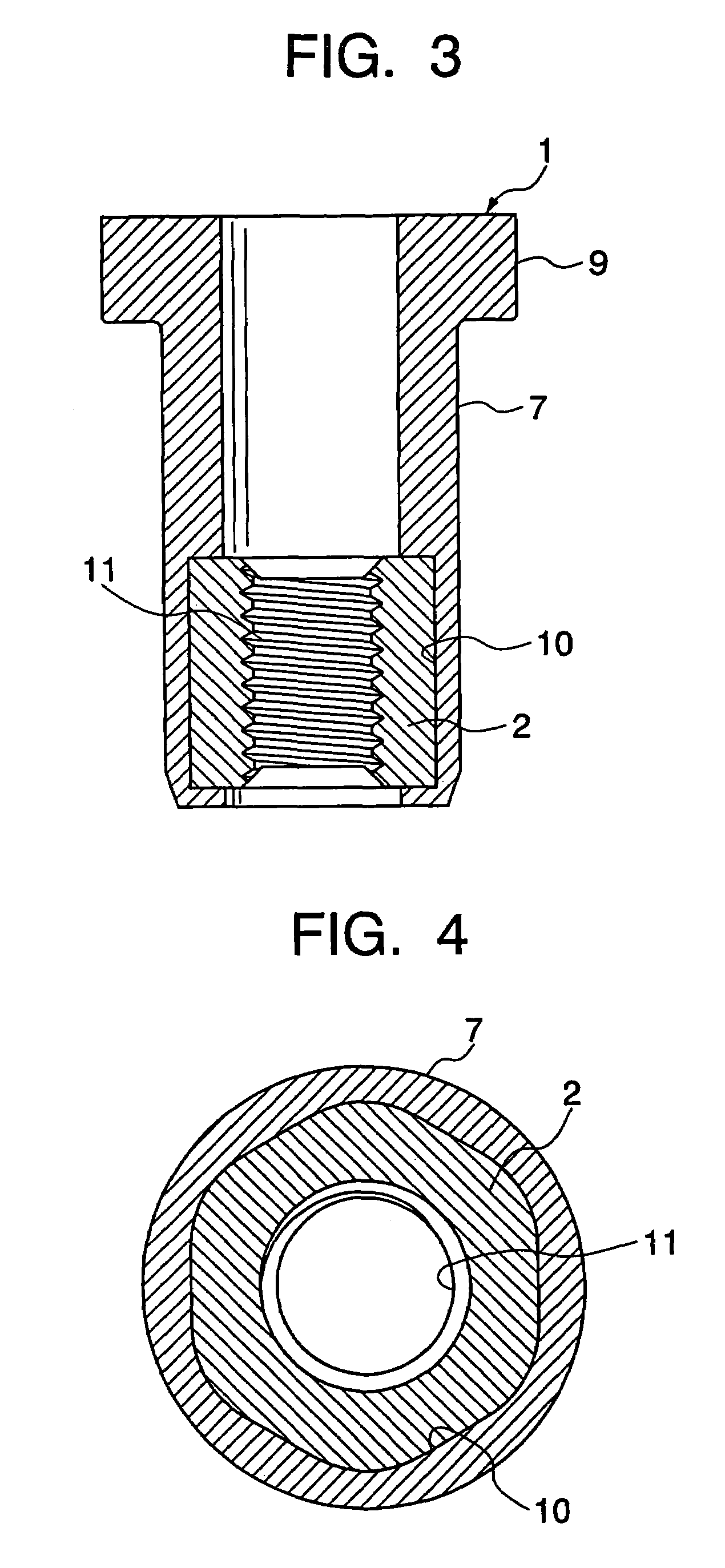Elastic fastener
a technology of elastic fasteners and fasteners, applied in the direction of fastening means, screws, dowels, etc., can solve the problems of insufficient recycling, long forming time, low ozone resistance, etc., and achieve the effects of reducing forming time, enhancing ozone resistance, and reducing weight of elastic fasteners
- Summary
- Abstract
- Description
- Claims
- Application Information
AI Technical Summary
Benefits of technology
Problems solved by technology
Method used
Image
Examples
Embodiment Construction
[0018]With reference to the drawings, an embodiment of the present invention will now be described. FIGS. 1 to 4 show a blind nut type elastic fastener 1 according to the present invention. FIGS. 5 and 6 show an internally threaded portion 2 of the elastic fastener 1. FIG. 7 shows the condition that the elastic fastener 1 is fixed to a workpiece 3 such as a vehicle body by screwing a headed bolt 5 into the elastic fastener, and an attachment member 6 such as a bracket or an attachment panel is fixed to the fastener 1 with the bolt 5
[0019]In FIGS. 1 to 4, the elastic fastener 1 comprises a hollow cylindrical portion 7, an internally threaded portion 2 provided at one (lower end) of the ends of the tubular portion 7, and a circular flange 9 formed at the other end (upper end) of the tubular portion. The tubular portion 7 and the flange 9 are not limited to be a round shape, and may be a square or polygonal shape. The tubular portion 7 and the flange 9 are integrally formed with each o...
PUM
 Login to View More
Login to View More Abstract
Description
Claims
Application Information
 Login to View More
Login to View More - R&D
- Intellectual Property
- Life Sciences
- Materials
- Tech Scout
- Unparalleled Data Quality
- Higher Quality Content
- 60% Fewer Hallucinations
Browse by: Latest US Patents, China's latest patents, Technical Efficacy Thesaurus, Application Domain, Technology Topic, Popular Technical Reports.
© 2025 PatSnap. All rights reserved.Legal|Privacy policy|Modern Slavery Act Transparency Statement|Sitemap|About US| Contact US: help@patsnap.com



